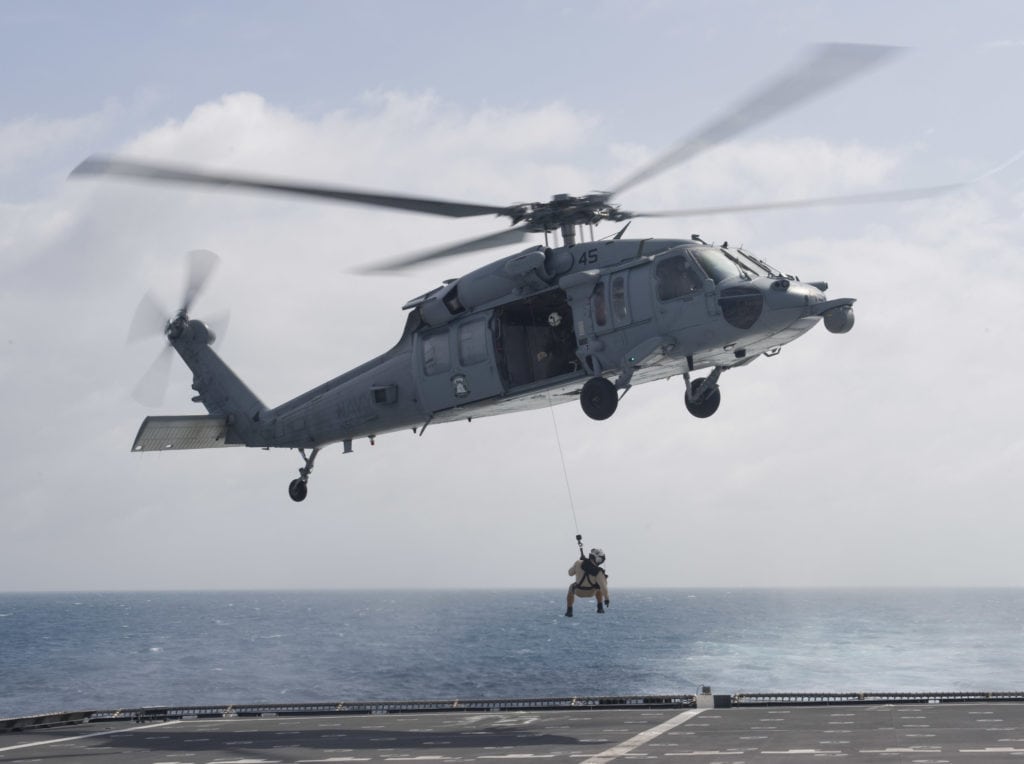
Naval Aircrewman (Helicopter) 2nd Class Kevin Brodwater, a search and rescue swimmer assigned to the littoral combat ship USS Coronado (LCS 4), is lowered from a Sikorsky MH-60S Seahawk onto the flight deck during a search and rescue medical evacuation drill. (U.S. Navy photo by Mass Communication Specialist 2nd Class Amy M. Ressler/Released)
The U.S. Navy has contracted Elbit Systems of America to deliver helmet display tracker systems and associated line items for the Sikorsky MH-60 Seahawk, the U.S. Defense Dept. says. The contract, worth some $49.9 million, covers a maximum quantity of 126 displays. Work is to be performed in Fort Worth, Texas, with an expected completion date of June 2021. Elbit secured this deal through a noncompetitive process.
News outlets say the displays would equip both the anti-submarine warfare version of the helicopter and the multimission version. They provide situational awareness and targeting enhancements with pilot/copilot line-of-sight capability, continuously compute impact point for the automatic gun helicopter armament subsystem and have capability for guided and unguided rockets. Symbols let pilots know where the sensors and weapons are looking, and pilots can use look-and-click technology to designate fixed points on the ground. This is an upgrade from legacy systems, which includes the elimination of the rail linkage system. The system also uses components that the military already has in stock for other aircraft.